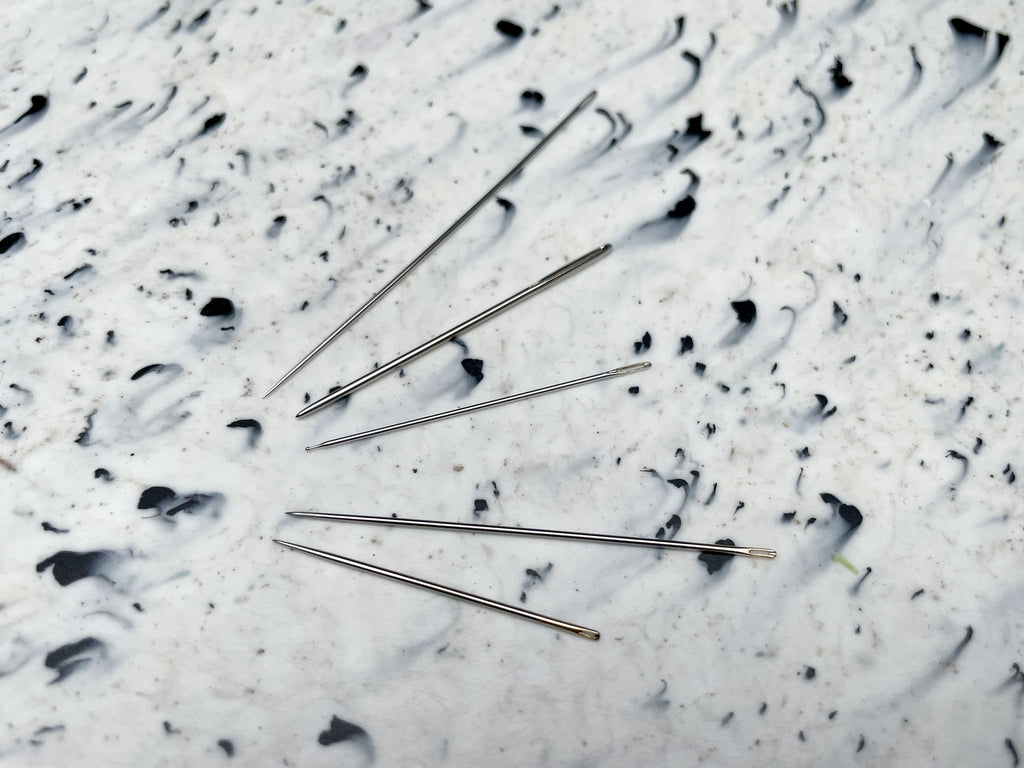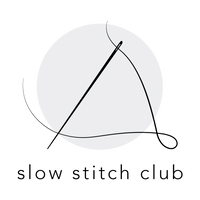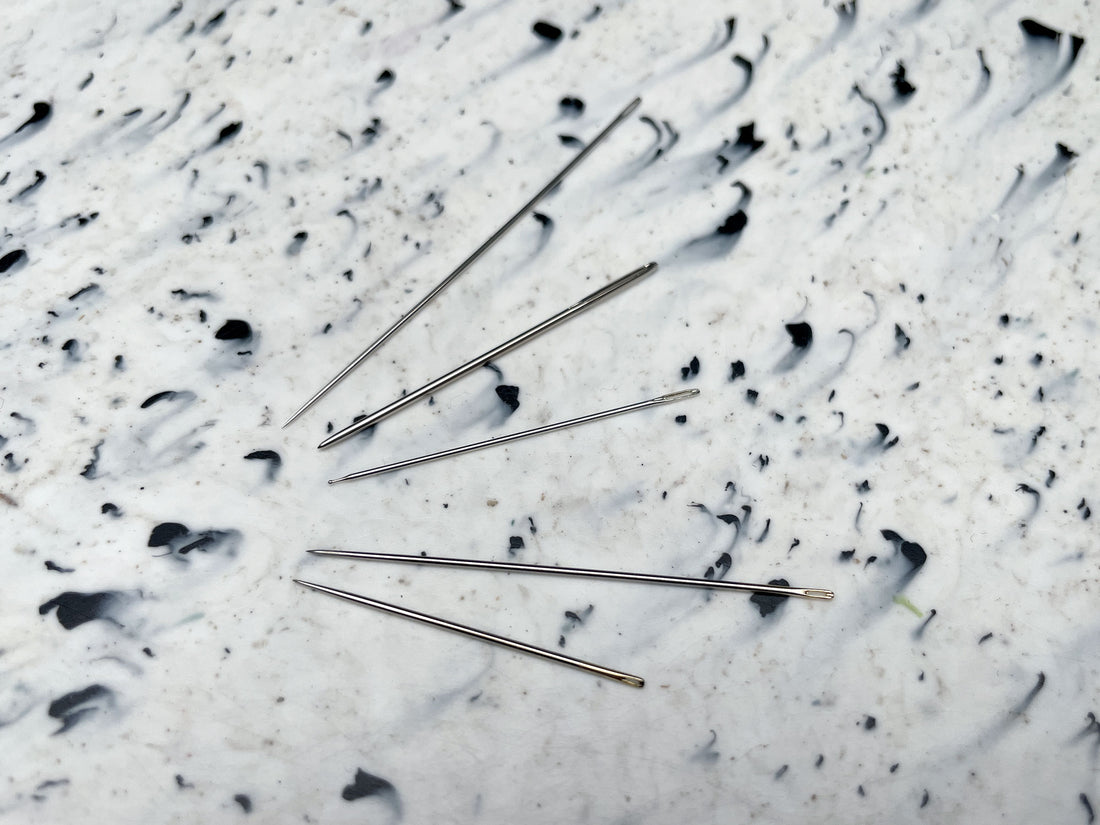
(Clockwise: long cotton darner, tapestry needle, ball-tipped needle, long sashiko needle and short sashiko needle)
What needles can I use for mending? This is a question I get asked SO often at workshops. And I get why, there are so many hand sewing needles to choose from and I know it can feel a bit overwhelming if you're new to sewing.
What needles can I use for mending? This is a question I get asked SO often at workshops. And I get why, there are so many hand sewing needles to choose from and I know it can feel a bit overwhelming if you're new to sewing.
Whilst I'll always advocate for using what you have to hand in amongst your sewing tools, there's no doubt that the right needles can be a really big difference to your repairs - not only to the finished mends but in the process of actually using them too. Here are a few of my favourite needles for mending, and why...
Darning needles
There are different darning needles available depending on the weight of the yarn and garment that you're using, but generally they tend to have a long and thin eye to help when threading your yarns. You can get super long cotton darners (these are my favourites for darning cotton socks) that are long enough to weave through all of your warp threads comfortably as well as short, blunt tapestry needles that are great for darning chunkier knits as the blunt tip prevents snagging on the fibres as you are weaving.
I've also been loving ball-tipped needles for darning recently as they prevent snagging fibres like the tapestry needles do, but are thin enough to darn on finer fabrics such as tshirts.
Sashiko needles
Sashiko needles are some of my favourites to use across all kinds of sewing as they are super strong and comfortable to use.
As with darning needles they come in a variety of lengths but often have a wider eye to allow for thicker threads. When you're repairing thick fabrics like denim these will make such a difference to your work - and to your fingers! I'd also recommend a good thimble or two if you're working a lot with thicker fabrics.
I love using longer sashiko needles when I'm building up a long stretch of running stitches as it's so satisfying to pick up so many stitches at once, but if you're trying to stitch curves or circles then switching to a shorter needle will make it much easier to get a nice smooth curve.
A handful of these needles will set you up so well for all kinds of visible mending, and will really help to make the process of stitching so much smoother!

